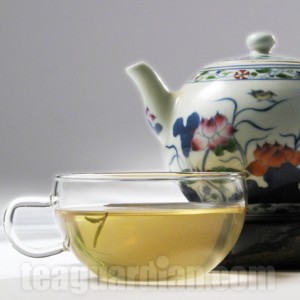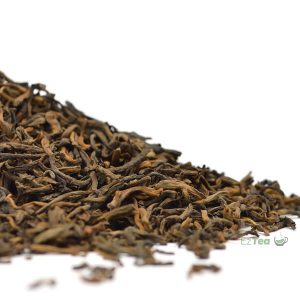How many cups of tea can I drink each day?
Dr John Weisburger drinks 8 cups of tea a day. He specifies them to be green tea. The President Emeritus for Research of American Health Foundation is now 90 years of age.
“If you already drink a cup a day, consider having two…” said Dr Jeffrey Blumberg, professor of nutrition in Tufts University. Indeed, some cohort studies in the health effects of tea conclude that even 2 cups a day makes some difference. Most studies use the range of 4~6 cups a day to study the effects on weight loss, artery health, cancer prevention, bone preservation, and other health focuses. Many indicate that the more cups of tea you drink, the more obvious the health effects. ( For specific topics and references, please refer to the respective articles in this site. )
The quantity of intake, so it seems, is proportional to how likely one is benefit from tea. However, it is rather the amount of quality tealeaves one consumes that matter, because the quantity of salutary substances in tea, such as tea polyphenols and L-theanine, is related to the quality as well as the amount of tealeaves, not how many cups of tea. Studies show that their health benefits is proportional to the natural quantity intake. The more the merrier.
In all the research papers we have read there really has been no encounter of side effects of tea, in those that have tried to measure it. Reports of adverse effects of tea have been tied with the use of instant tea mixes and low quality compressed tea in issues of fluorides. Not specific to tea, the other major concern is caffeine. Some people are more sensitive to it and pregnant women have to use it with constrains.
Therefore, the upper limits of tea consumption is rather tied to the safety amount of caffeine and fluorides your body condition allows, as we have discussed in the respective articles in this site.
As discussed in the respective post articles, let’s recap them here for quick reference:
For fluorides safety, as long as you are using finer loose leaf teas rather than those from instant mixes, regular teabags, ready-to-drinks, or low quality compressed tea etc, you are pretty safe. ( Please refer to the article on fluorides in tea )
The pregnant woman, who should avoid excessive caffeine to prevent the baby from underweight, should keep a maximum of 6 x 220 ml cups, or about 9 x 150 ml cups. That is to say she is not excessive in chocolate, cola drinks, energy drinks etc, and avoid coffee. (Please refer to the caffeine special feature)
In terms of tealeaves amount that is about 13 g of tealeaves for the pregnant woman, if basing on conventional and milder way of infusion, i.e. 1 gram of leaves to 100 ml of water. This can be doubled for the ‘average’ person, with plenty of safety bracket.
Many people who are not allergic to caffeine, or those who use tea quality naturally lower in caffeine and fluorides, they may use a lot more tea a day.
My advise is, as with a balance in the diet, it is much more beneficial to use teas from a couple of categories of tea a day, and prepare some lighter infusion, as in the USDA or FSA (UK) surveys, 1 g to 100 ml. However, try always to prepare a round or two (or more, like I do) of stronger ones, 2 g to 100 ml, for the kick of it and for some real enjoyment of tea. As long as you keep to the amount of tealeaves used each day, and the quality is not that bad, you can benefit pretty well from this Nature’s greatest gift and not worry at all.












@bear38, I have tried many different ways to answer this similar question and understand that I really have to write an article about it. All in all, it is unrealistic to give a general rule of say you can steep a batch of green tea two times and an oolong 3 times. As you may have noticed, each selection is different and each infusion condition makes a difference.
Your other question, whether when the taste is out so is the salutary substance is worth another angle of looking at it: Life is too short for bad tea!!!!! That includes tea from good leaves that have been drained of their good stuffs.
As written in other articles, a majority of the health-contributing constituents come out in the first infusion, less the second… If you are following a style that I advocate for relatively longer infusion time even in the gongfu approach, than this statement is true.
I’ll also do some demos about getting the best of particular varieties. They will give you better insights into the generalised datas in the infusion parameters listed in this site.
I think it is hard to say how many tea cups would be the perfect balance. Because it also depends on which size they measure it. Western cups are much bigger in most of the cases than eastern used ones. In fact most of the western cups holds 3-4 times the amount of Asian type cups. So while I used to drink 4 cups in Gongfu style another one just ended his 1st cup in Western type of method.
I normally drink around 2 liter at least of tea each day and in those cases different types not just one I stick too. I think it is important to find the own balance. In my case it is mostly a mix between Wuyi – Dancong – Taiwanese Black and Oolongs – and Pu’erh. Because these are the types my body reacts the best and this without sideeffects.
I noticed that I am not so much used to green ones both Japanese and Chinese ones. I really like them but they are just on my “occasionally list” because especially on an empty stomach I get a bit dizzy and it directly attacks my nerve system – so my hands could get a bot shaky. That’s why those teas are just my “sometimes ones”.
But I noticed one thing and I can tell two stories. One of my own and one of a acquaintance of mine. Since I started to drink tea on a daily basis and this for around two years now my health got better and better. Normally I was sick 5-7 times a year. Catching a cold very easily. But this year I was sick free for around 9 months straight and this wasn’t the case since – I can’t remember anymore. Sometimes I catch the feeling something might come up but then I drink a Wuyi or a Dancong and instantly my nose is free again and on the next day everything is as normal as it could be.
Like I said I also know a different kind of story. Someone I know. He is a neighbor of mine had such a bad aggressively cancer that he even stopped all the treatments because they were harming him that much and wasn’t any help at all anymore. The specialists who treated him just gave him at least a year to live. So he started to fight against it and beside sports he was drinking green tea everyday on a basis of 2 liter. And this is now more than 10 years ago and he is healthy and the cancer is gone.
I dedicate all my passion to tea because I found my inner peace because of it and a part of myself I was looking forward to find and finally found.
Hi Leo, I’m somewhat confused about the definition of “cups”. When you mention 3 cups does it mean 3 cups of infusing the same tea leaves until the third time or does it mean as much as 3 different batches of tea leaves no matter how many times you infuse each batch?
@ bear38, that is exactly why I have tried to direct the readers’ focus to the total daily consumption of tea leaf amounts rather than the scientific report’s non-scientific use of the unit “cups of tea”. In fact, besides the confusion that you have pointed out, there are also leaf quality, infusion quality, and tea varieties that impact very significantly on the health effects of tea. Everyone should easily understand that a teabag offers a very different package of polyphenols than a first flush Longing. Having said that, I think the scientists are simply trying to put it as simple as possible to encourage more people to get into drinking tea. Health issues that have developed into national security / financial problems and that can be eased with the simple beverage habit is perhaps a moral obligation for many scientists.
Leo, thank you for your reply. I was browsing through the website and I suddenly remembered this topic. After re-reading your reply just now, a new question popped : how many times do we re-brew the tealeaves to maximise their health effect? I once tried Immortal Rebaked 2008, and it tasted good up until the 3rd infusion, and after that no matter how long I infuse it, the taste just subsided (I used the gongfu parameters that you provide in this site). On the other hand, the brown tieguanyin has almost lost its delightful aroma in the 2nd infusion. Regarding this matter, is the taste/aroma a good indicator of how much polyphenols left in the tea? As in when it has lost the initial taste, then the subsequent infusion of the leaves won’t yield effective health effects anymore?
By the way, Merry Christmas to you and all readers, wish you all and family a great and healthy year ahead !